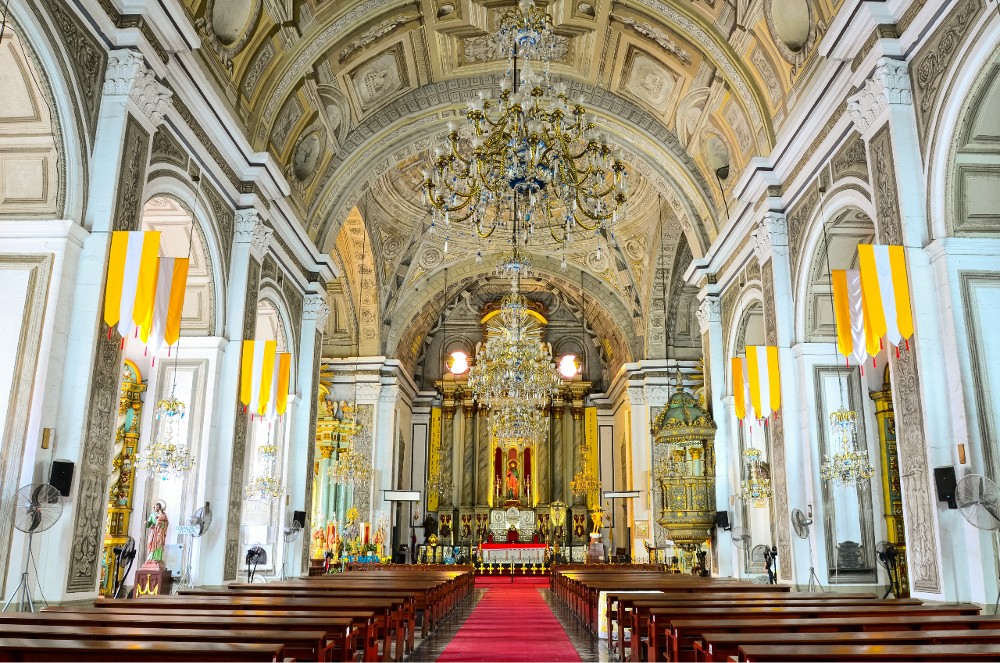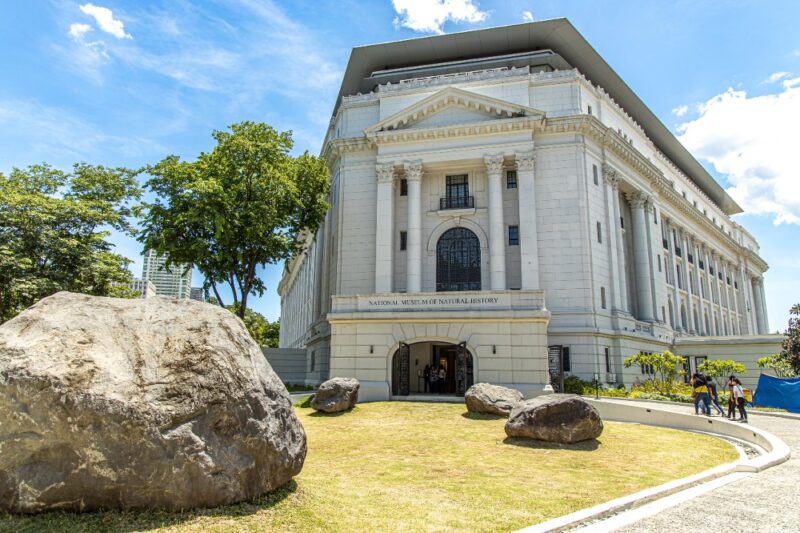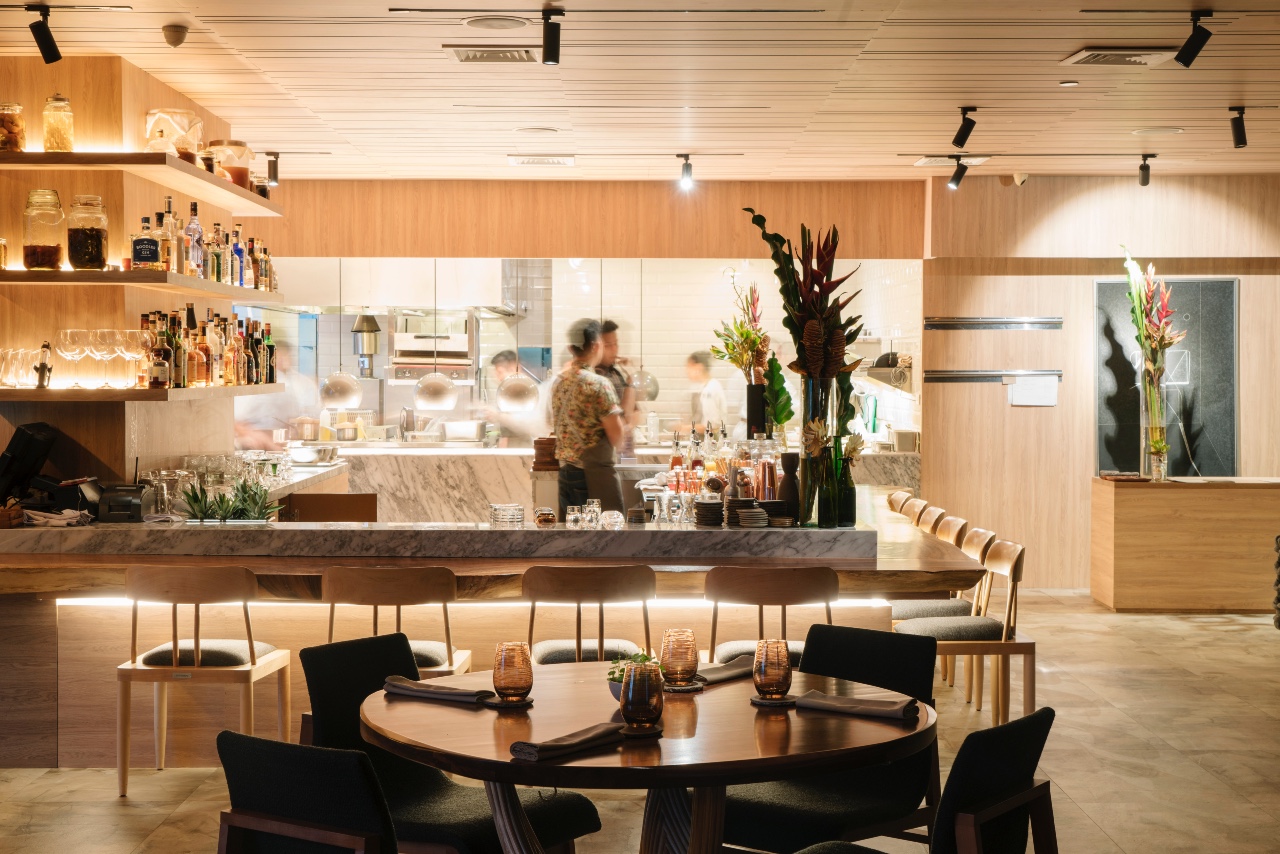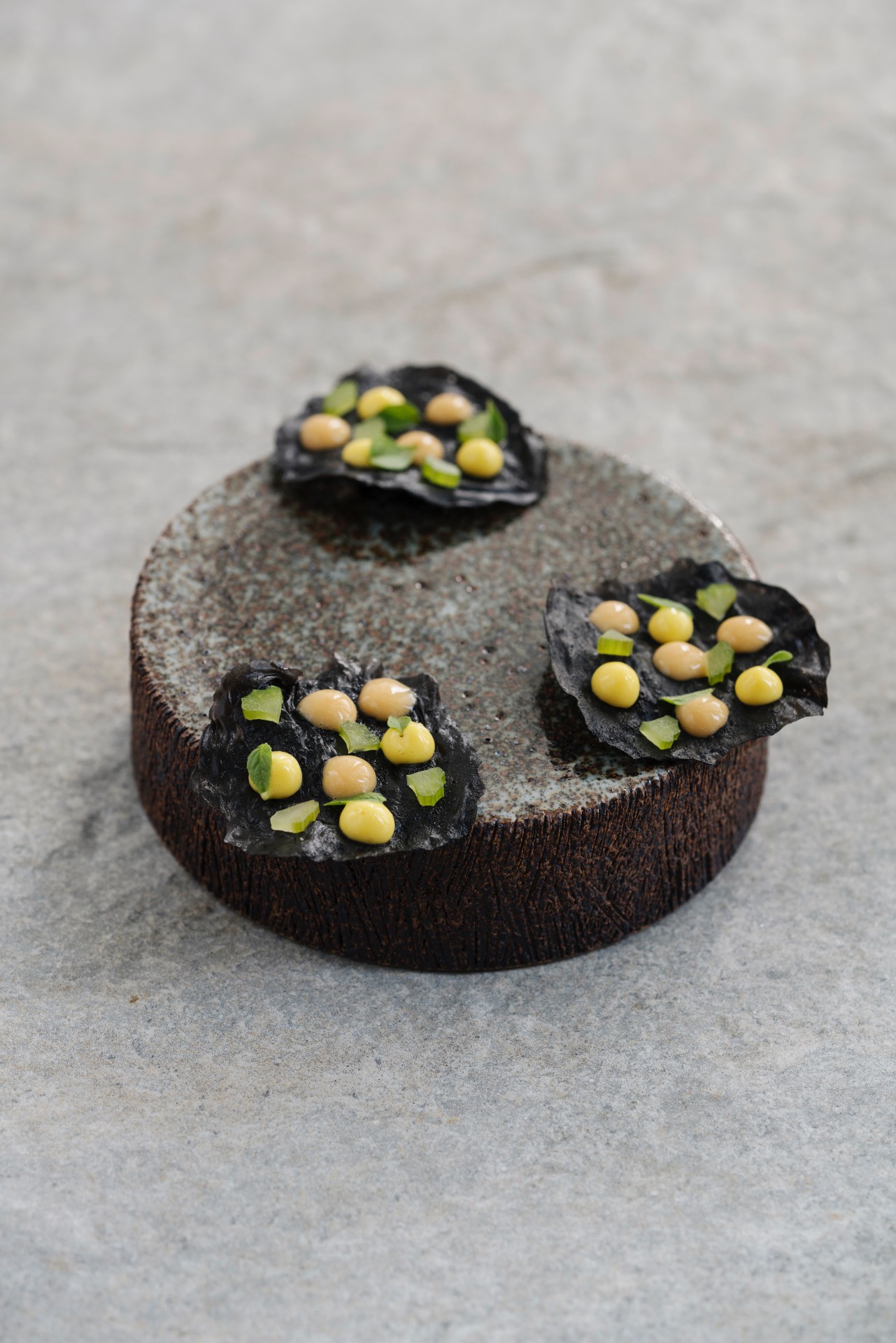Not all must-see sites in the Philippines are overlaid with white sand. Sometimes they’re neatly paved with centuries-old cobblestones. Others are lit with neon lights. Most are hiding in plain sight. Metro Manila, a sprawling metropolis of 16 cities that includes the country’s capital of Manila, can seem a bit daunting and a lot to take in, but a visit to a few historic spots gives you an interesting way in to a story-filled weekend adventure.
Take a morning walk at Rizal Park
It makes sense to begin a weekend of exploring the city at this park along Manila Bay, where just across the way from the green sprawl is a discrete marble marker for Kilometer 0, the point from which all distances in the country are measured.
Rizal Park, formerly called Luneta Park, is a long promenade surrounded by lush greenery. The largest urban park in the Philippines, it was once a bustling social hub for Manila’s upperclass during the Spanish regime.
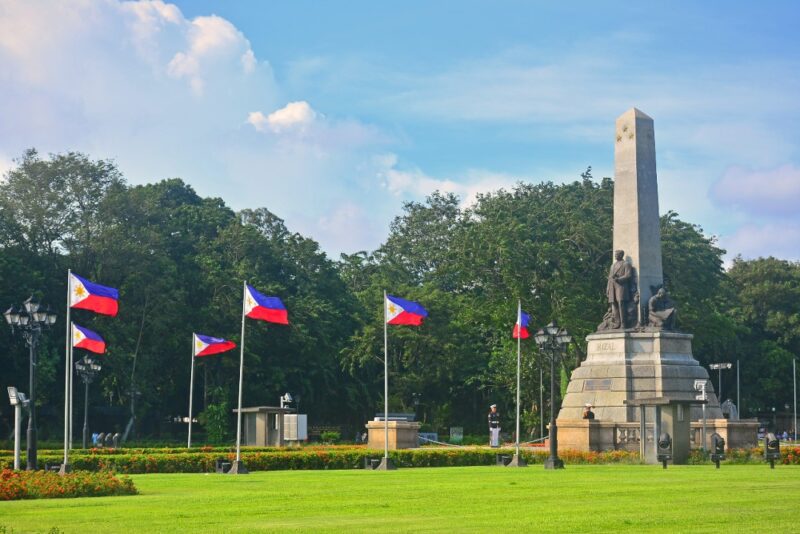
Today it draws a more diverse crowd, here for the wide, walking paths and the breathing space, as well as for photo ops at the Rizal Monument, a shrine to national hero Dr. Jose Rizal. His writings and eventual death by firing squad execution at the park in 1896 helped spark a revolution that ended over three centuries of Spanish colonial rule. About 100 meters from the monument, life-size statues on the exact spot of execution depict that pivotal scene in the country’s history.
Several paces from the Rizal Monument stands the Independence Flagpole, the country’s tallest, which marks another break from occupying forces. On this same spot in July 1946, the Philippine flag was raised, marking the end of American occupation after 48 years.
Explore Intramuros
From Rizal Park, walk over to nearby Intramuros, a historic fortress built 400 years ago as central command for the occupying Spanish forces. It also served as a safe residential enclave for families of government officials and rest of the colonial elite.
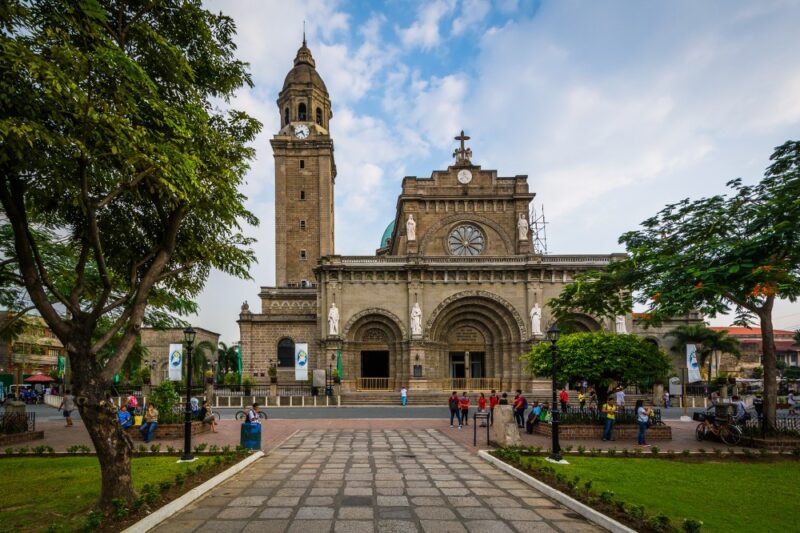
Although much of Intramuros was bombed out and razed to the ground during the Battle of Manila in the Second World War, many of its grand structures have been reconstructed. Among them is the Manila Cathedral, the country’s prime basilica, originally established in the late 1500s, and whose imposing and ornate Neo-Romanesque structure, its eighth incarnation, was completed in 1958.
Meanwhile, the Baroque-styled San Agustin Church, completed 1604, was the lone structure that miraculously survived the bombing. A UNESCO World Heritage Site, the church is open to tourists at any time, except while a mass is ongoing, during which you’re advised to keep your cameras and phones away until the service is done.

If your legs begin to protest, hop on a guided Segway tour of Fort Santiago, a centuries-old Spanish citadel that became the military headquarters of a parade of foreign armies at various points in history until World War II. Stop for a mid-morning caffeine boost at an unlikely attraction: a tiny, hidden Starbucks tucked behind the old walls.


